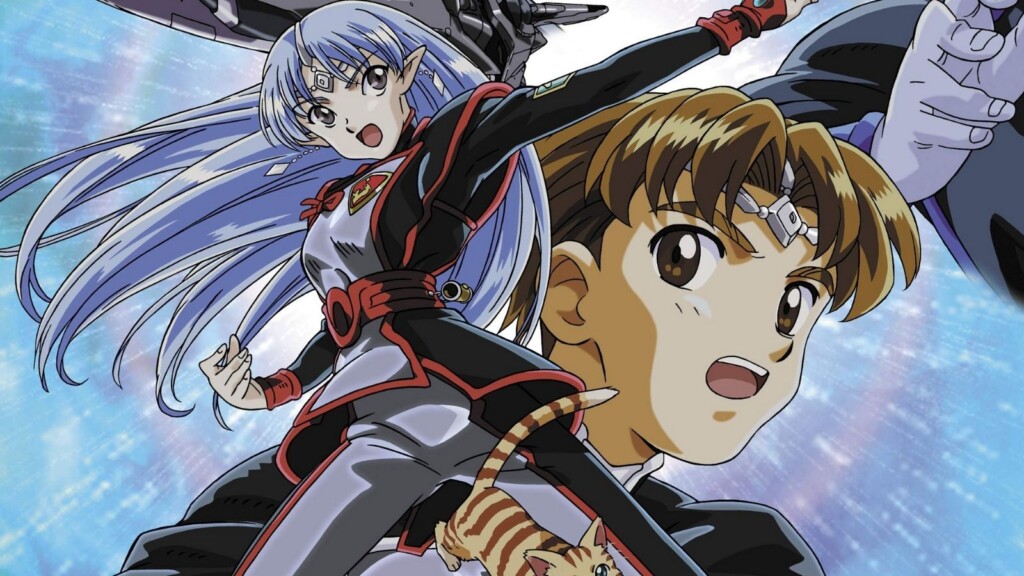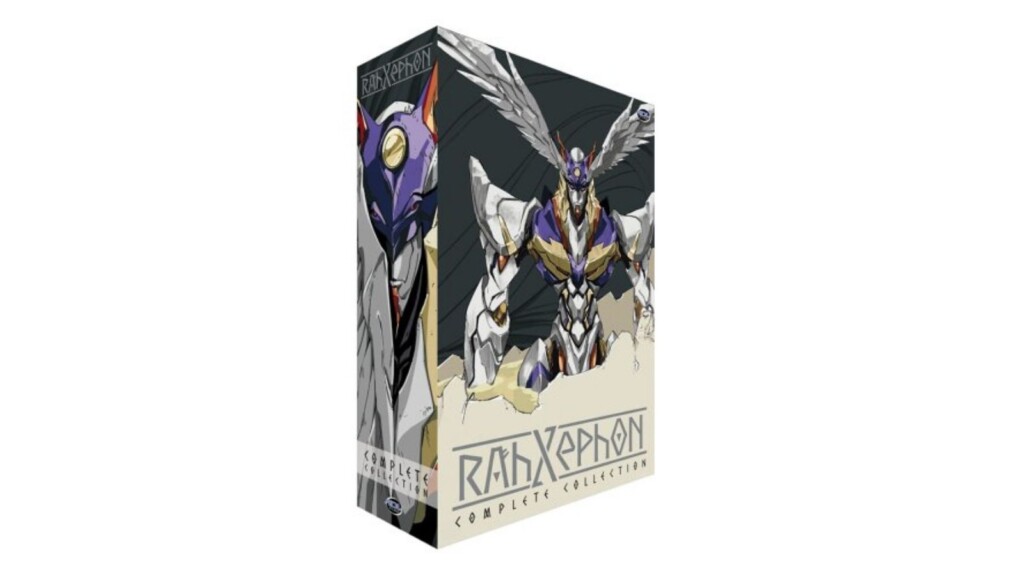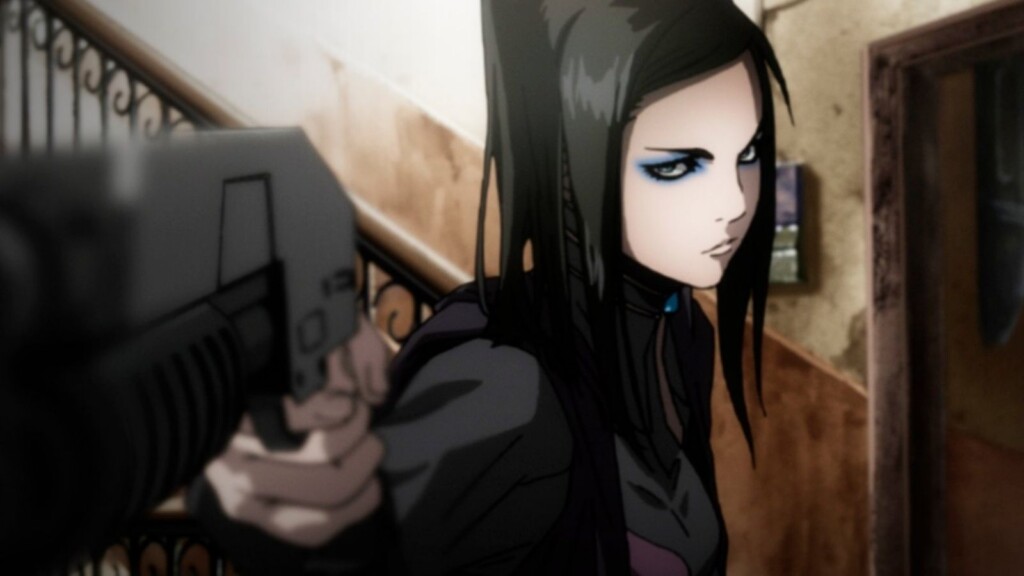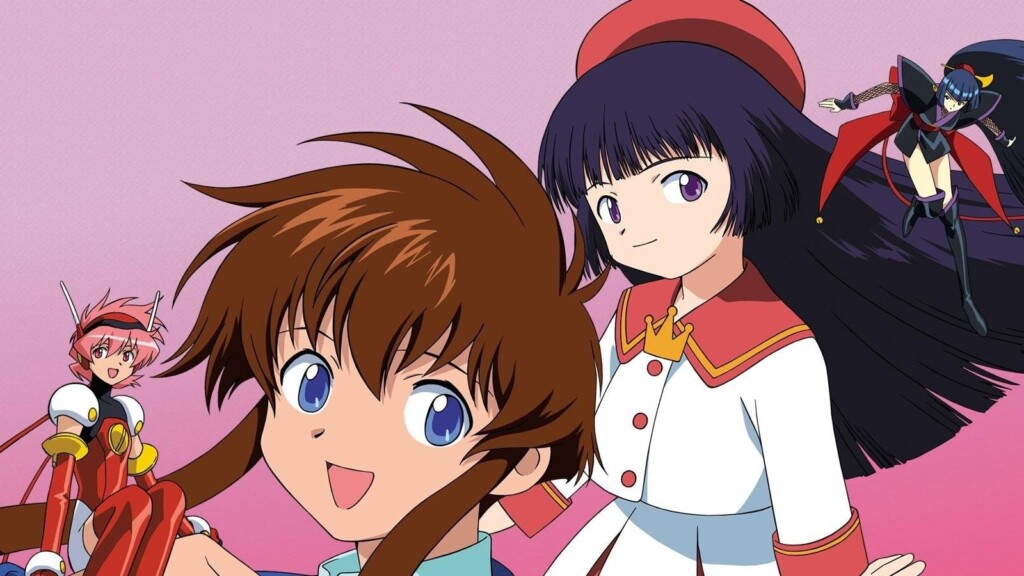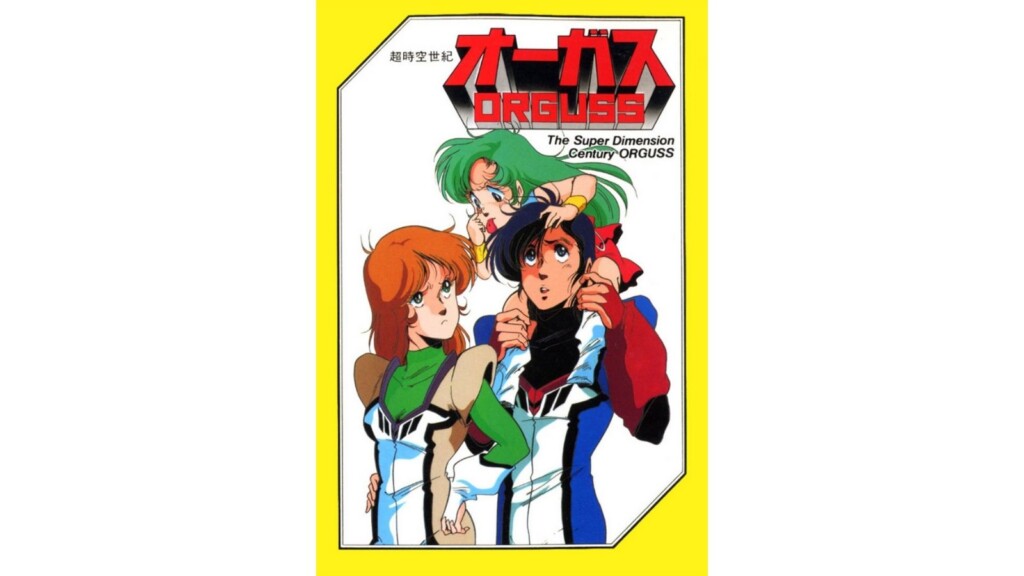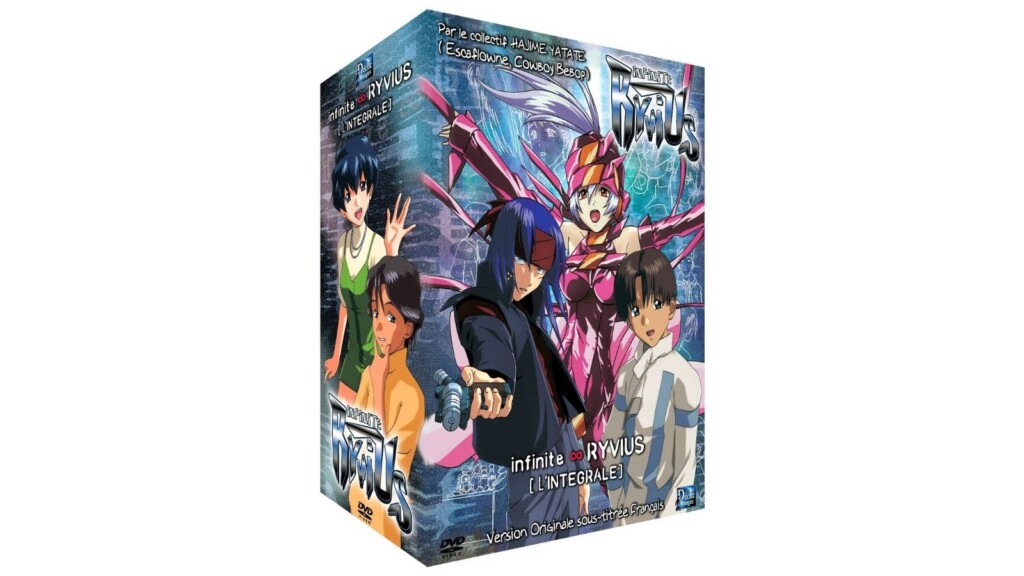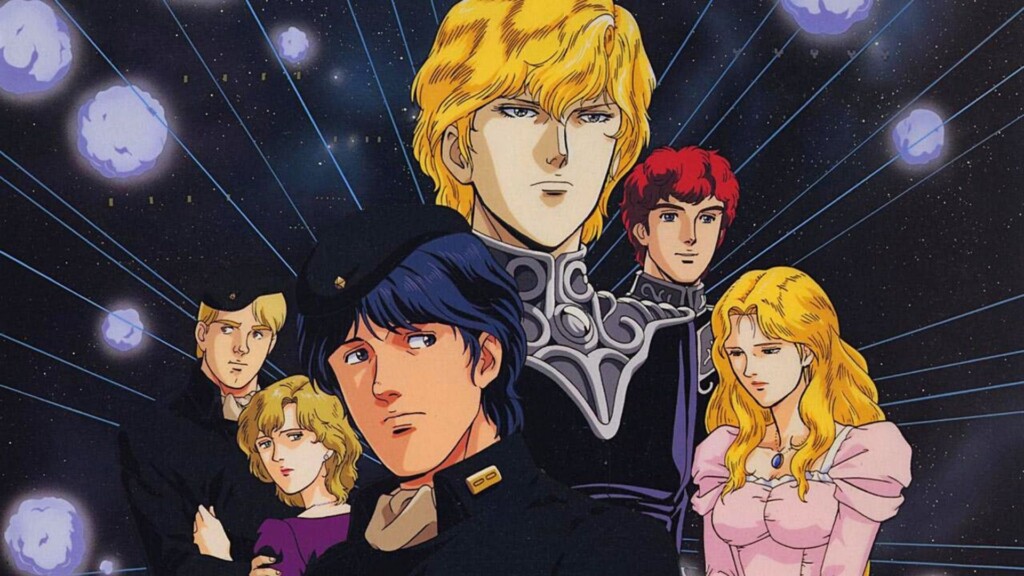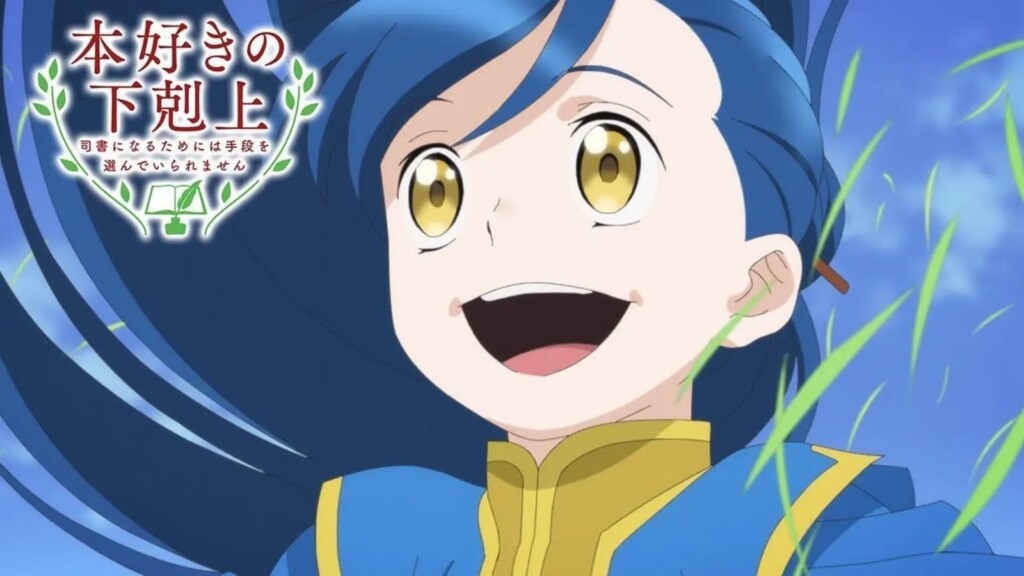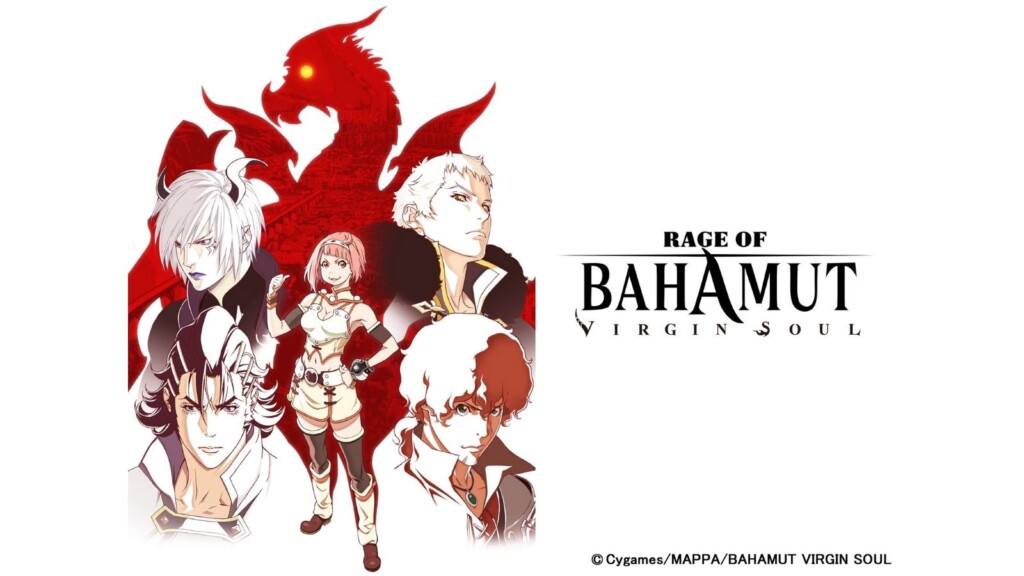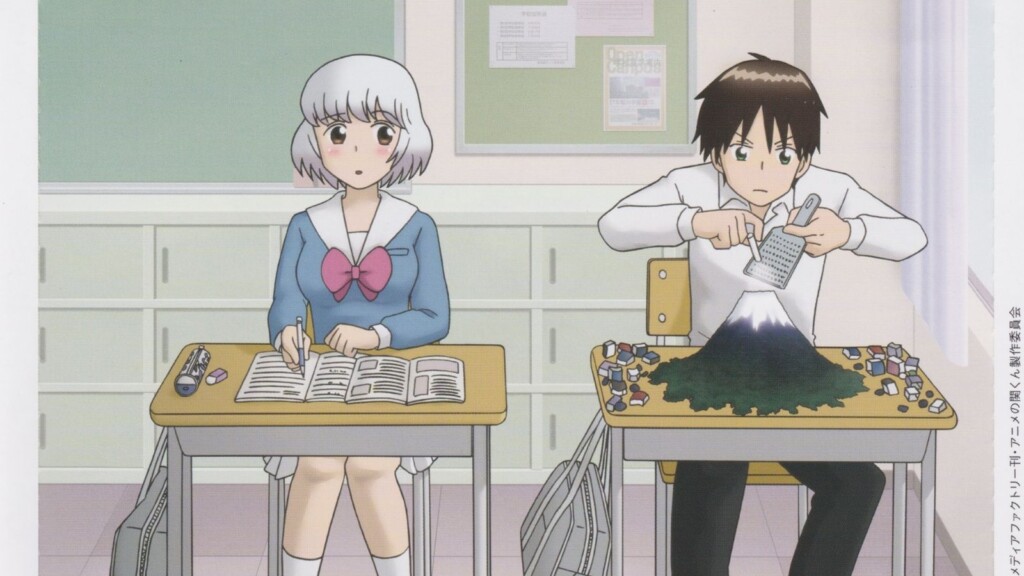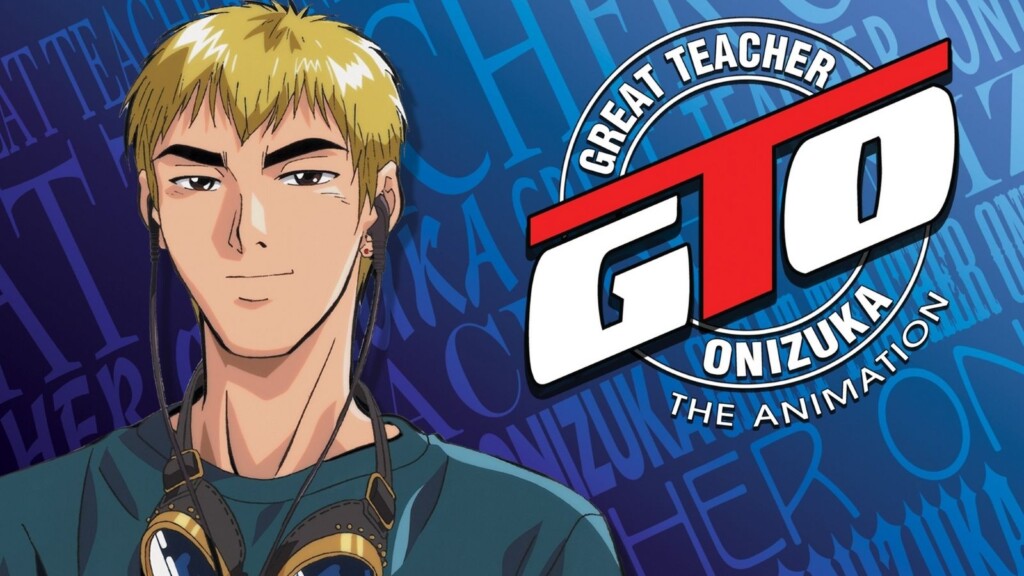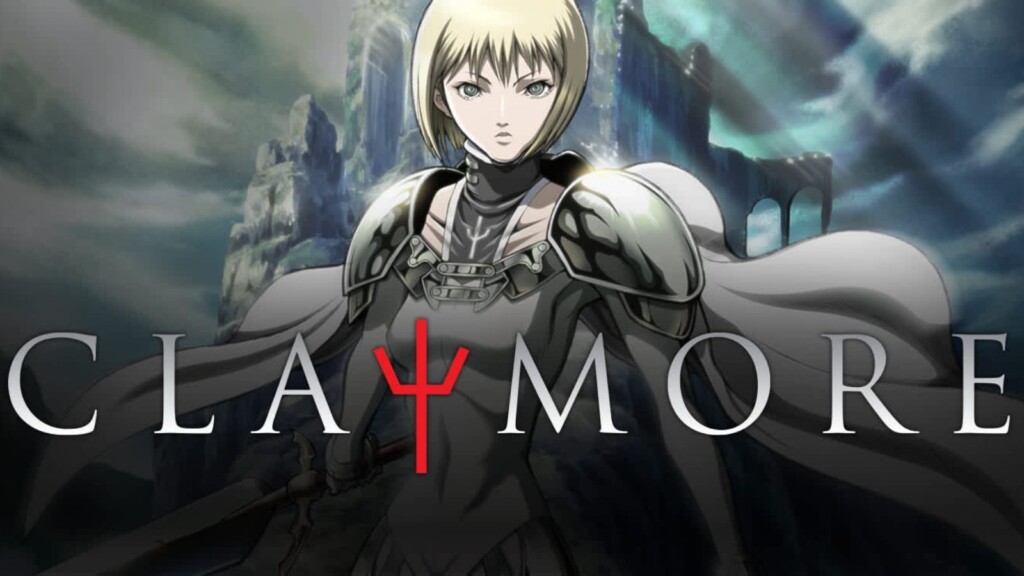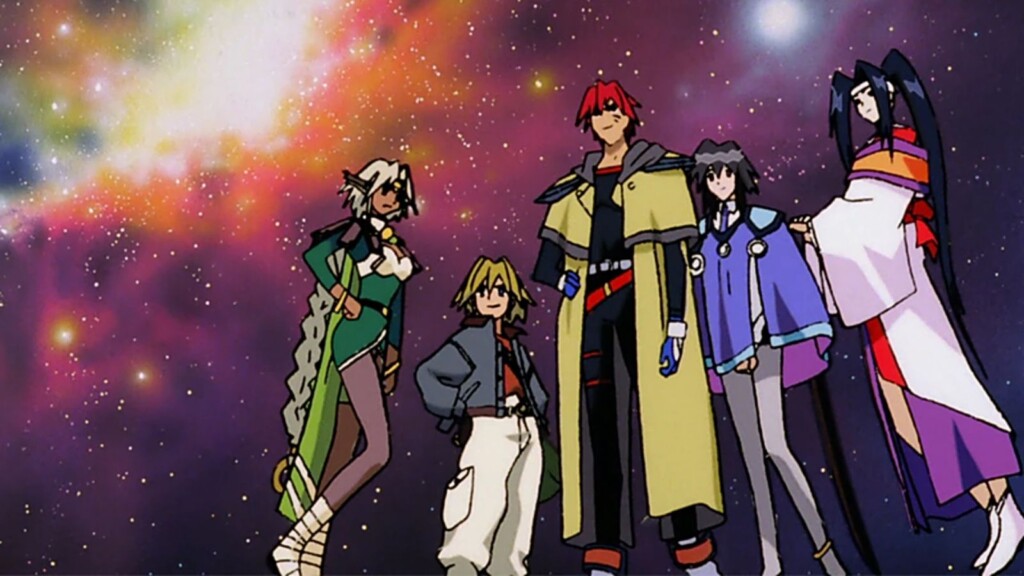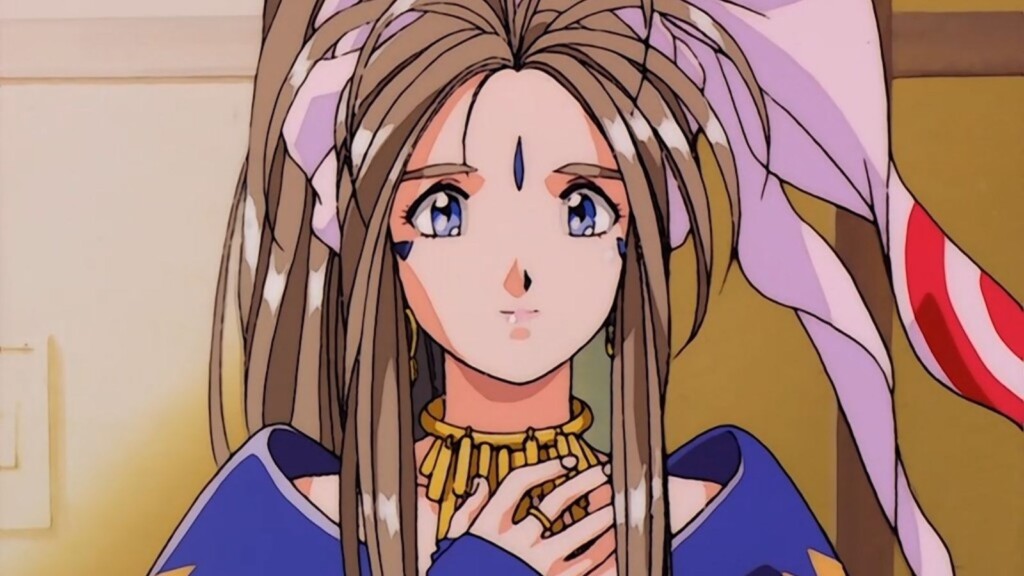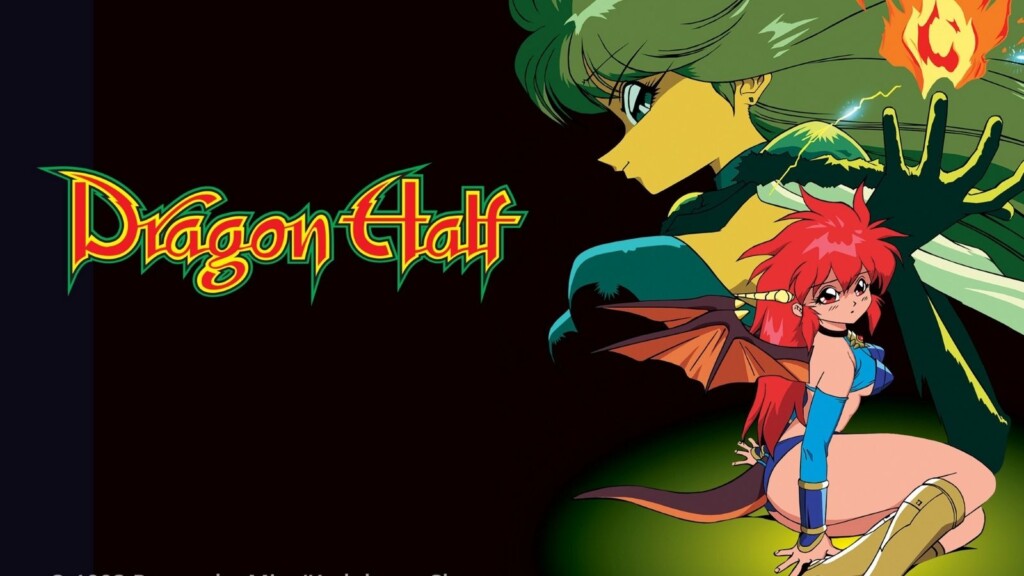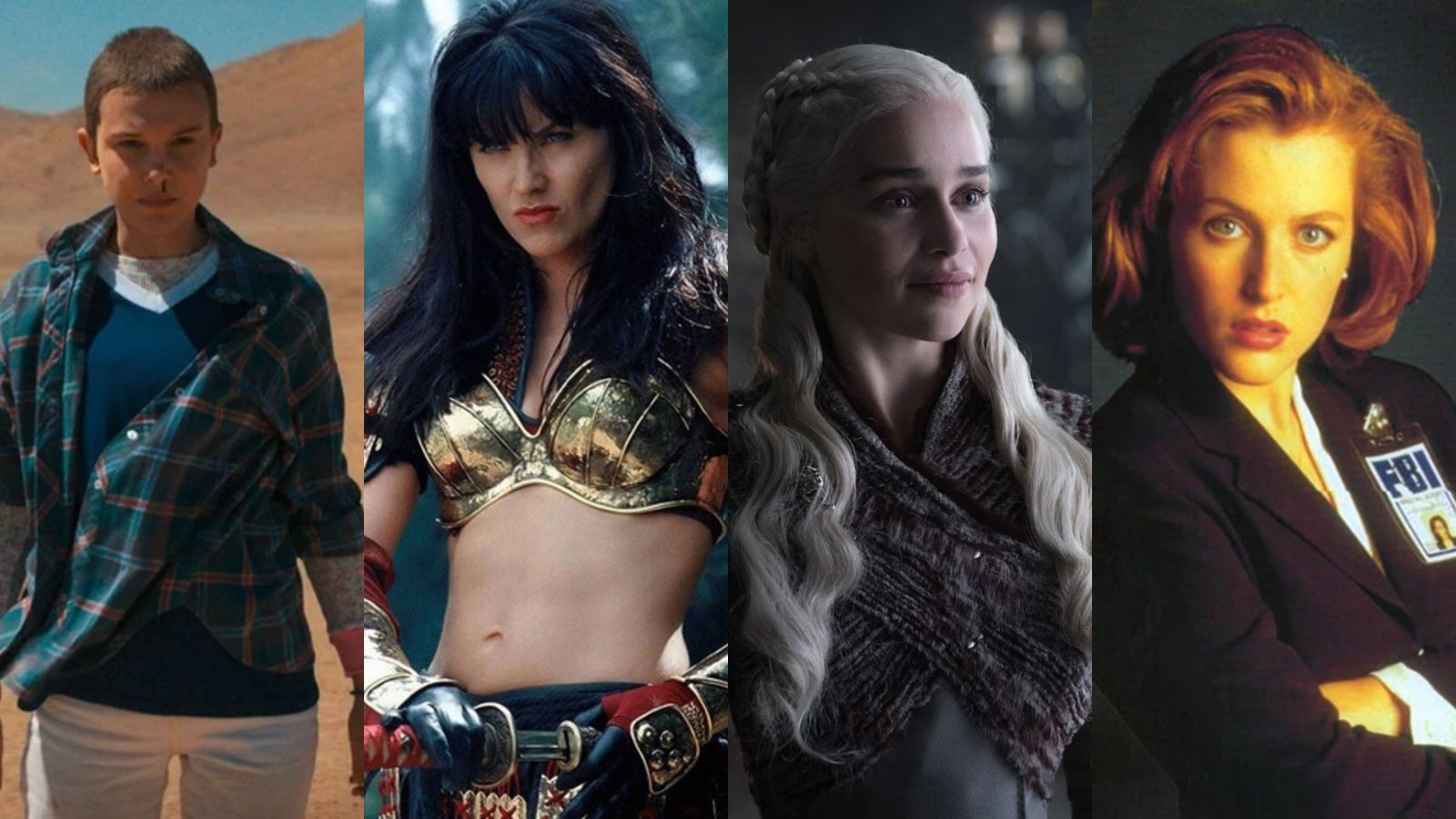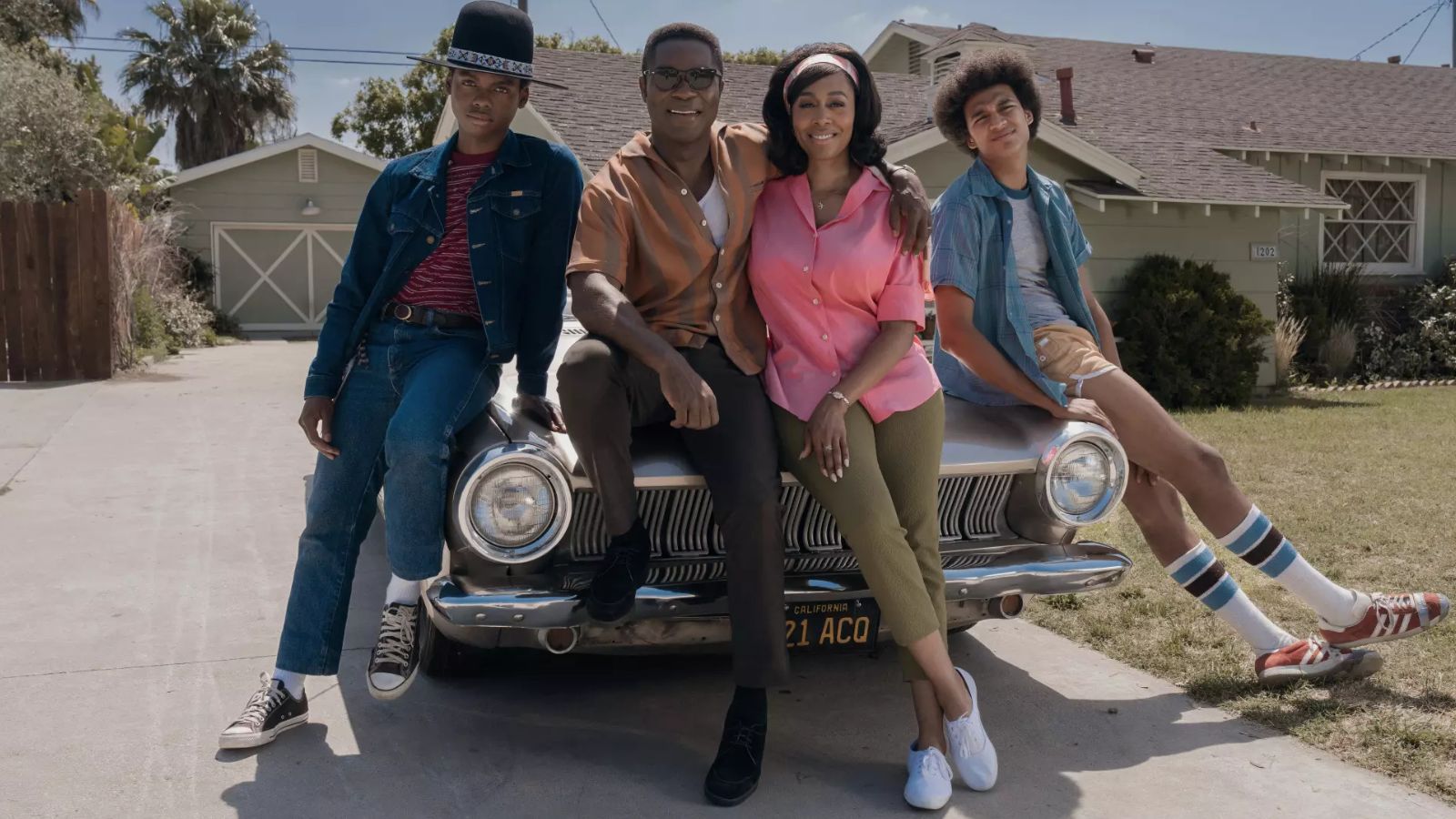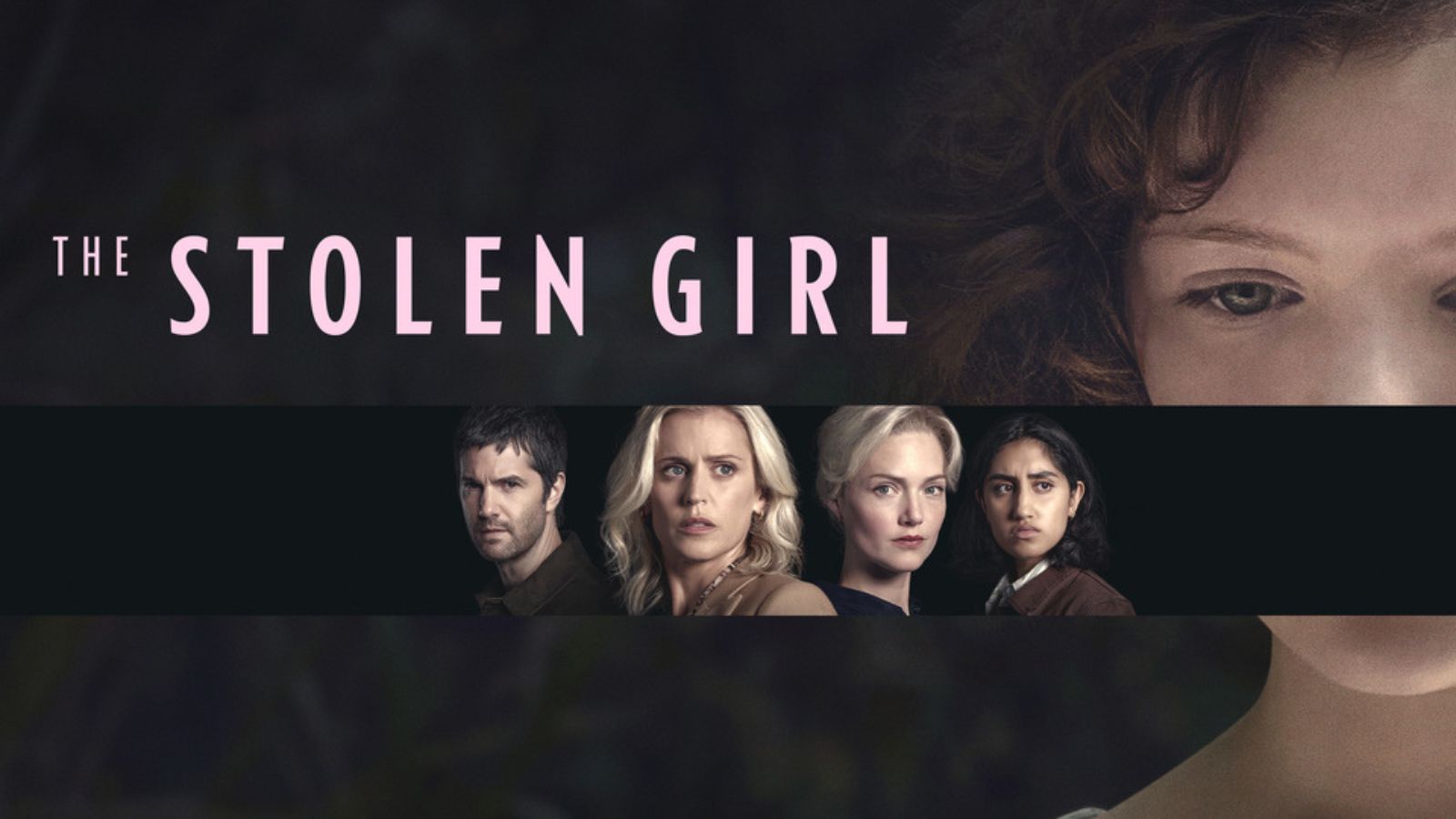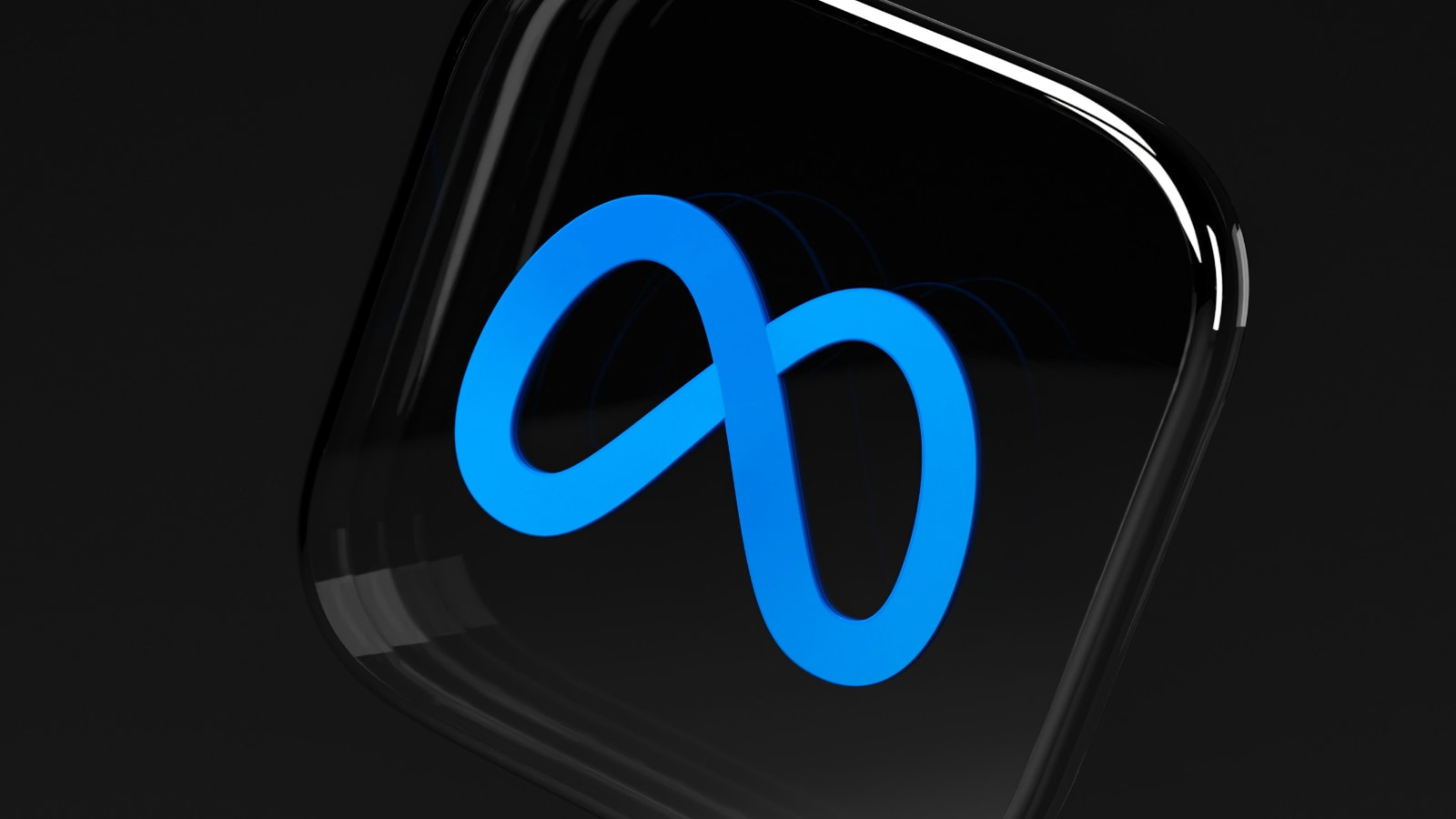
Best Underrated Anime No One Talks About
Since the early days of the medium, the number of anime series and movies have utterly exploded. There are so many shows out there that no one but the most hardcore fanatic could see them all. Yet, there are still many brilliant shows that never really got the viewership numbers they deserve. While we obviously don't know every single show that deserves to be on a list like this, we've grouped 20 underrated anime that we really think didn't get the attention they deserve.
20. Crest of the Stars & Banner of the Stars
- Year: 1999-2005
- Number of Episodes: 38
- Where to Stream: Amazon Prime Video, Funimation (Crest of the Stars) & Amazon Prime Video
This is one of my personal best anime of all time. Since Crest of the Stars and Banner of the Stars are two separate shows, you don't need to watch Crest in order to understand Banner. However, we strongly recommend you do, because it introduces the two main characters and makes Banner of the Stars far more meaningful.
The anime is an adaptation of novels written by Hiroyuki Morioka, although sadly, it only makes it partway through the series. The good news is that you can buy the translated e-books through Amazon. Morioka is still writing the series, so we have no ending yet.
As for the anime itself, it's set in the far future. Actually, thanks to space-time relativity, the different peoples depicted in the show are now all equally far into the future - but we digress.
Basically, there's a galactic empire founded by the descendants of genetically modified humans, created to be spacefaring servants. Known as the Abh, they have conquered countless worlds, although they don't really care about the planets themselves. In fact, Abh conquest usually means greater prosperity thanks to interstellar trade.
Jint (Jinto in the show) is the son of a democratically-elected president, leader of the planet Martine. The Abh show up, and his dad surrenders under the condition that he become a noble in the Abh aristocracy. This is why Jint becomes a Count and ends up serving in the Abh military.
It's also why he becomes acquainted with the Imperial Princess Lafier (Lafiel in the show) and stands by her side as an adjutant during her long road to the throne. This show has it all: dry humor, politics, epic space battles, and one of the sweetest and unique romances in anime. If you do watch the series, be sure to read the books to see what happens to our heroes years after the events depicted on-screen.
19. RahXephon
- Year: 2002
- Number of Episodes: 26
- Where to Stream: Amazon Prime Video & HiDive
In the years following the release of Neon Genesis Evangelion, there was a slew of mecha anime that tried to capture that same vibe. Evangelion had rewritten the rules around what mecha anime could be, so it stands to reason that copycats would emerge.
Some were more successful than others, and RahXephon might very well be the best of the bunch. We've seen some reviewers opine that RaXephon is actually better than Eva, but it's different enough to render such a ranking meaningless.
RahXephon has taken some of the best things about Evangelion and mixed them up with its own original ideas. There's strong visual symbolism and the pervasive feeling that there's a lot more going on under the surface than we know.
Instead of Angels, the main antagonists of RahXephon are the Mu. An interdimensional alien race who look just like humans but have blue blood. In a pitched battle against the Mu, Tokyo becomes enveloped in a bubble that looks like Jupiter from the outside. Inside the bubble, time flows at only one-fifth of the speed it does outside. The humans inside the bubble are taught that nothing exists outside it anymore. This belief is enforced by Mulian mental manipulation.
We don't want to spoil the show's plot, so instead, it's worth mentioning that the aesthetic of RahXephon and its mystical clay mecha (called Dolems) is unique. Music and its power to change the world is a central theme, and the protagonist isn't as wimpy or indecisive as Shinji Ikari. However, that's not necessarily a positive or negative thing, just a difference with Evangelion. It's not fair really to call RahXephon a straight Evangelion clone, it has many other influences and its own ideas, but it is fair to say that if you loved Eva, you're probably going to have a good time with RahXephon.
18. Ergo Proxy
- Year: 2006
- Number of Episodes: 23
- Where to Stream: Netflix, Hulu, Amazon Prime Video & Funimation
Ergo Proxy has a pretty dedicated fanbase, but the show never reached the height of Ghost in the Shell, which is perhaps its most direct rival. It's a dystopian cyberpunk story with beautiful animation, fascinating ideas, and impressive action scenes.
If you're a fan of the aforementioned GITS, books by Bruce Sterling, or movies like The Matrix and Johnny Mnemonic, Ergo Proxy needs to be on your shortlist.
In the world of Ergo Proxy, an ecological disaster has forced people to retreat into domed cities. Within these domed cities, humans and their android helpers live in apparent peace. At the start of Ergo Proxy, society is rocked by a series of murders. What's worse, these murders have been perpetrated by the very androids meant to protect and serve what remains of humanity. The droids are going nuts thanks to a virus nicknamed "Cogito." Yes, that's a reference to Descartes. Ergo Proxy is heavily laced with philosophical ideas, so if that's your thing, you're in for an even bigger treat.
Our heroine Re-l is tasked with investigating these murders and getting to the bottom of them. Like every other human in the city, she was lab-grown to fulfill a specific function in society. In her case, she's essentially law enforcement, but investigating this case uncovers more than Re-l could have imagined and upends everything she thought was true about their world.
17. Angelic Layer
- Year: 2001
- Number of Episodes: 26
- Where to Stream: Amazon Prime Video & Angelic Layer
CLAMP is a studio with a long list of mainstream hits under its belt, but Angelic Layer isn't really a show that enjoys the game of Magic Knight Rayearth or the cult status of something like Chobits.
In the world of Angelic Layer, people build small combat dolls called Angels and then use their minds to control them in combat arena. You can your opponent fight until one doll can't keep going.
So Angelic layer is technically a fighting sports anime, but the story has a really fresh take on the genre. The main character, Misaki, happens upon the world of Angelic Layer as a complete newbie. However, it turns out that she has quite a lot of natural talent for the sport and a strange (somewhat creepy) dude named Icchan helps her get started. Culminating in Misaki's participation in Angelic Layer tournaments.
The actual episodic battles are fun and interesting to watch, but the real meat of the show is deeper than that. Misaki has a long and troubled history with her mother, who she hasn't seen for years. As luck would have it, the game of Angelic Layer ends up being connected to her mom in ways Misaki could never have expected. Angelic Layer also has canonical connections to Chobits, but these are more apparent in the manga. This makes sense, given that the two adaptations were made by different studios.
16. Orguss & Orguss 02
- Year: 1983-1984 & 1993-1995
- Number of Episodes: 35 (Series) and 6 (OVA)
- Where to Buy: Amazon (Series) & Amazon (OVA)
Mention the name Haruhiko Mikimoto in the context of the '80s, and most people will immediately think of the wildly successful Super Dimension Century Macross. However, Mikimoto was the character designer and animation director for another amazing show called Super Dimension Century Orguss.
Like Super Dimension Cavalry Southern Cross, Orguss is part of the same "Super Dimension" trilogy that Macross belongs to. It just happened that Macross was the breakout hit among the three. We could never say Macross didn't deserve it, but in many ways, Orguss is a stronger show.
The gist is that in the year 2062 (we're getting close now,) there's a war between two global superpowers for control of a space elevator. This culminates in the detonation of a dimensional bomb, which goes wrong thanks to the bumbling of the main character Kei. As a result, he's transported to a fractured and fantastical future, where he meets an alien girl and has to navigate a truly strange reality in order to find a way home.
The OVA Orguss 02 shows us another world haphazardly pieced together by a dimensional bomb and another romance between an alien girl of the same species and a human boy. It's a short, bittersweet, and compelling story. You don't need to watch the original series to make sense of Orgus 02 either, but both are well worth watching.
15. Mugen no Ryvius
- Year: 1999-2000
- Number of Episodes: 26
- Where to Stream: Amazon Prime Video
This show is a little complex and hard to explain, so maybe an analogy would be a good place to start? We've always thought of it as a sort of Lord of the Flies in space. Basically, hundreds of space pilot school students end up on a ship called the Ryvius, which saved the occupants of the space station's school from being destroyed due to sabotage. The thing is, the adults have died in a fruitless attempt to save the students. Now, the average crew member on the ship is 16. You can probably imagine how well that goes.
Now the kids onboard have to grow up fast, learn the hard lessons of real-world politics and deal with seriously messed up seemingly supernatural nonsense as well. It's not great for them, but it makes Mugen no Ryvius infinitely entertaining.
14. s-CRY-ed
- Year: 2001
- Number of Episodes: 26
- Where to Stream: Crunchyroll, Amazon Prime Video & Anime Planet
If you like kick-ass battle-based anime where people have unique superpowers, s-CRY-ed should be at the top of your list. These days shows like My Hero Academia are hyper-popular, but s-CRY-ed offers a grittier, more badass take on the idea, set a few years after a major geological disaster when people living in the lost lands surrounding Tokyo start developing powers. These "alters" can create unique personal weapons from surrounding matter and wreak incredible destruction.
The Native Alters live in the badlands, outside the reach of the official government. It's a little like the wild west, where you can live free, but death is around every corner. Then, there are the government-sponsored alters who act as a super-powered police force - the ones who are in direct conflict with the Native Alters.
Kazuma is one such Native Alter, and he makes a living as a merc for hire. During one of these missions, Kazuma is captured by a government alter named Ryuho, starting one of the most intense rivalries we have ever seen. They fight each other with such hate that it actually causes another calamity. We don't want to spoil where the show goes after that point, but s-CRY-ed doesn't always correspond to your expectations and remains a pretty fresh show many years later.
13. Legend of the Galactic Heroes
- Year: 1989-1997
- Number of Episodes: 110
- Where to Stream: HiDive
We've written about Legend of the Galactic Heroes a few times in other lists on Technadu. and it's perhaps not as obscure as other titles here. Heck, the show even has a modern remake that's currently airing.
That being said, we don't think the remake captures the charm of the original more than 100 episodes show. This is one of the most epic space operas in any medium. It's right up there with the likes of Dune, and it especially reminds us of galactic imperial conflicts by authors like Isaac Asimov and Robert Heinlein. There's definitely a streak of that western sci-fi as written by the "old masters."
The central conflict in this show is between two massive powers. One is the Free Planets Alliance, and the other is the Galactic Empire. There's also a third player in the form of the Dominion of Phezzan, which isn't a military player but a powerful political and economic force.
In each of the two main factions are the young and brilliant commanders called Yang Wen-li and Reinhard Von Lohengramm. Both are essentially good men, just on different sides of the war. They have more in common with each other than they do with the twisted rulers they find themselves under.
Legend of the Galactic Heroes has a realistic feeling to its conflict, especially the political dimension. It's a slow burn, but the battles and campaigns are often not what you'd expect. If you have any love for military anime or political shows, this is not to be missed.
12. Ascendance of a Bookworm
- Year: 2019-2020
- Number of Episodes: 26
- Where to Stream: Crunchyroll, Netflix & VRV
I have an admittedly large soft-spot for even the worst isekai (other world) anime, but Ascendance of a Bookworm is one of the rare modern isekai that doesn't fall into the trap of a Mary Sue or Gary Stu main character. Instead, our reincarnated heroine has plenty of flaws and weaknesses that make her fight to get somewhere in her new world feel earned and satisfying.
Urano Mototsu is about to become a librarian and realize her dream of just reading and being around books all day, except a sudden earthquake crushes her to death under a pile of books. She's reincarnated into the body of a sickly, weak, and dying 5-year-old girl named Myne. In this world, books are incredibly scarce. So if Myne wants to live in a world where she can read books to her heart's content, she'll have to make it possible herself.
Using her vast book knowledge, she sets out on a quest to make a book. In doing so, she comes into conflict with the theocracy, the nobility, and the limits of her own physical body. It turns out that even seemingly innocent ideas you read in a book can be perilous!
The show is still in production, but if that's not enough for you, there are also manga and the original novels. Should you want to see what happens past the end of the current anime.
11. Archenemy and Hero (Maoyu)
- Year: 2013
- Number of Episodes: 12
- Where to Stream: Crunchyroll, HiDive & VRV
Here's another show based on a light novel that doesn't get talked about in anime circles enough. Maoyu tells the story of a demon lord and the hero who's meant to defeat her and how they team up to slowly transform the world into a better place.
The show is very slow-paced and focuses quite a lot on topics such as politics, economics, and the correct way to raise crops. Yes, you read that right. The anime adaptation of Maoyu is only 12 episodes long yet still manages to feel quite sedate. In many ways, the show reminds us a bit of Spice and Wolf - another anime that's a mix of romance and economics. If you like a slow-paced, more cerebral anime, Maoyu is definitely a show you shouldn't overlook. It's weird to describe a story set in a fantasy world full of magic and demons as "grounded," but that's the vibe Maoyu gives off, and it just works in this particular case.
10. Grimgar: Ashes and Illusions
- Year: 2016
- Number of Episodes: 12
- Where to Stream: Funimation, Crunchyroll & Amazon Prime Video
While the stereotypical isekai characters are often overpowered and treat their new world as a playground, some isekai anime take a more brutal and grounded approach. The best mainstream example is probably Re:Zero, where the main character is very much not having a good time. However, we think Grimgar is probably one of the most realistic depictions of what it would actually be like if a bunch of modern schmoes suddenly found themselves in a medieval fantasy world. Life would be brutal, and magical monsters and creatures would certainly be incredibly dangerous.
Grimgar is almost like a fantasy isekai crossed with the grim brutality of Westeros from Game of Thrones. The story starts with a part of novice adventurers who undergo grueling battles for a guild. They need to earn enough money to eat and have a roof over their heads. It turns out that these novices are probably from modern-day Earth, but they have no idea how they got to this harsh new world.
Grimgar quickly shows us that even "lowly" creatures like goblins can make short work of a human, and that lesson is written in blood and grief. Yeah, this isn't the show you want to watch to lift your spirits, but it's definitely worth watching if you enjoy grimdark drama.
9. Rage of Bahamut
- Year: 2014-2017
- Number of Episodes: 37
- Where to Stream: Netflix, Funimation & Hulu
Based on a game of the same name, Rage of Bahamut had two seasons subtitled Genesis and Virgin Soul. You need to watch both seasons to get the whole story, but it's really the first season, Genesis, that really makes the show worthy of this list.
Let's start by saying that the animation and the character design of this show are amazing. Studio MAPPA has done an incredible job in both crafting detailed visuals and putting together jaw-dropping action sequences.
As for the story, it's an epic and beautiful yarn about gods and demons fighting while humans get caught in the middle. In the past, a great beast called Bahamut emerged and posed such a threat to both god and demon that they had to work together against the greater enemy.
That seemed to bring a period of relative peace to the world - that is, until a beautiful woman named Amira appears carrying half of the key needed to free Bahamut. She doesn't remember much, but she is on a quest to find her mother. Aided by the bounty hunters Favaro and Kaiser, both with rather dumb hairdos, their seemingly small adventure is only the tip of the iceberg. The story becomes ever more expansive, epic, and biblical in proportion as time goes by.
8. Tonari no Seki-kun
- Year: 2014
- Number of Episodes: 21
- Where to Stream: HiDive, Anime Planet & Crunchyroll
Tonari no Seki Kun is an anime adaptation of a manga series by Takuma Morishige. Each episode is only a few minutes long, yet each one is packed with a rather clever gag. It centers on two students, Rumi and Seki, and how Seki comes up with the most creative distractions. As much as Rumi tries to ignore whatever whacky thing Seki is trying to do, she inevitably gets pulled in.
It's a great little show that doesn't take up too much of your time, and it's a great character piece. The best part, however, might be the amazing outro sequence which you absolutely should not skip.
7. Great Teacher Onizuka
- Year: 1999-2000
- Number of Episodes: 43
- Where to Stream: Anime Planet, Amazon Prime Video & Crunchyroll
Great Teacher Onizuka (or GTO, as it's known) was a fairly popular show back in 1999 when it first aired, but we don't really see anyone talking much about this brilliant show anymore. Not only is it a fantastic example of '90s anime visual design, but it also remains a fresh take on school-based anime to this day.
The main character is Eikichi Onizuka, a legendary former bike gang member, and martial arts expert who decides to pursue a job as a teacher. After getting his teaching diploma from a third-rate college, he goes job hunting. Through a series of lucky breaks, Onizuka gets a job at a fairly prestigious school and starts his career. However, not everyone is happy with this unusual appointment - both students and some fellow teachers constantly plot to oust Onizuka. Through it all, he uses his unique (and perhaps dim-witted) approach to solving the problems of the people around him.
GTO is funny, endearing and Onizuka himself is an incredibly entertaining character. If you get the chance to watch this classic, don't let it pass you by.
6. Gantz
- Year: 2004
- Number of Episodes: 26
- Where to Stream: Crunchyroll, Netflix & Amazon Prime Video
Right off the bat, we have to tell you that Gantz is hyper-violent, gory, and has (occasional) explicit sexual content. It's also one of the best mystery stories we've seen. There are many comparisons we could make, but it's a little like if someone crossed the Saw movies with the Matrix and added in a little bit of Lost as well.
Our story begins when two schoolboys are killed by a subway train after trying to save a drunk homeless man who fell on the tracks. Instead of staying dead, they wake up in a bare Tokyo apartment.
In the middle of the apartment is a mysterious sphere, which opens up. Inside there's a seemingly comatose old man hooked up to life support. These newly-resurrected folks are told they're part of a game. They'll be sent out on combat missions, armed with super-suits and amazing high-tech weapons. If they survive their battles with strange and brutal alien creatures, they'll earn points used to buy their freedom or to upgrade their gear.
Eventually, they even get the option to resurrect players who have died - which is where the other part of the show's appeal comes into play. Death and dismemberment are violent and frequent. No matter how badly a player is wounded, as long as they're still technically alive when the timer runs out (and the mission is a success), they'll be restored to normal condition. Die, and you better hope someone is willing to resurrect you rather than buy their own freedom. If you have the stomach for it, Gantz is a wild ride.
5. The Vision of Escaflowne
- Year: 1996
- Number of Episodes: 26
- Where to Stream: Netflix, Crunchyroll & Amazon Prime Video
Escaflowne is a classic isekai that's well-respected and reviewed but doesn't hold the mindshare in modern fandom that it should. The story, music, character design, and animation are all top-tier. It still looks better than the majority of modern titles - especially ones that have been badly infused with CG.
The story is set in the world of Gaea. The people of this world refer to Earth as the "Mystic Moon." It's a world very much like Earth, apart from the fantastical elements.
The heroine of this story is Hitomi. She inexplicably breaks through the barrier that separates our worlds and witnesses a young warrior fighting an earth dragon. Once she's in this new world, her psychic powers are awakened, and Hitomi becomes part of an epic conflict. The warrior she saw was actually a prince who needed the dragon's heart to power his mech. That's right, this is also a mecha anime, but with fantasy magic mechs.
The music is also notable as being the work of the legendary Yoko Kanno. She wrote in collaboration with her (then) husband, Hajime Mizoguchi. The story has plenty of melancholic beauty. You won't find a perfect happy ending here, but it's absolutely deserving of a watch and even a permanent spot in your collection.
4. Claymore
- Year: 2007
- Number of Episodes: 26
- Where to Stream: Funimation, Amazon Prime Video & Crunchyroll
Claymore is a 26-episode adaptation of the fantastic manga, which aired all the way back in 2007. Sadly, it never got a continuation on screen, but what we did get is a brilliant and underrated anime.
The story follows a woman named Clare, who is one of the titular Claymores - humans who have been infused with the blood of Yoma, the shape-shifting monsters that they are meant to hunt.
Clare is one of 47 Claymores and ranked 47th. At the start of the story, she rescues a young boy named Raki, who becomes her travel companion. As the story rolls on, the mysterious Claymore organization and Clare's uncomfortable relationship with them unfurls. The actual Yoma and Claymore battles are the real stars of the show. The concurrent flashback story is compelling as you learn more about the true intentions behind Clare's actions. Claymore offers some top-tier characterization, plot and voice acting. Don't miss an opportunity to see it.
3. Outlaw Star
- Year: 1998
- Number of Episodes: 26
- Where to Stream: Amazon Prime Video, Funimation & Crunchyroll
If you ask anyone which action anime from the '90s they remember most fondly, a common answer would be Cowboy Bebop. Yet, few people seem to remember Outlaw Star, a show with arguably more heart and style, even if it doesn't benefit from the stellar soundtrack by Yoko Kanno and the Seatbelts. That being said, although the theme song of Outlaw Star isn't quite as iconic as Tank!, it's actually very good indeed and a personal favorite of ours.
Outlaw Star is a brilliant space western. Like Bebop, it also features an ensemble cast of characters who have adventures on their ship. Appropriately named the Outlaw Star, Gene Starwind and his partner Jim Hawking start as general jack-of-all-trades freelancers. Through a series of events, they assemble a crew that includes a bio-android, a cat alien, and a contract killer.
Each episode usually centers around a mission meant to make enough money to keep the Outlaw Star going. After all, to run a ship is expensive! With a rival responsible for killing Gene's dad and an epic overarching plot involving mystical leylines with a solid romance thrown in as well, Outlaw Star should have been right up there with Bebop.
2. Ah! My Goddess OVA
- Year: 1993-1994
- Number of Episodes: 5
- Where to Buy: Amazon
The Ah! My Goddess manga ended its run back in 2014 after starting in 1988. It's hands-down one of my favorite manga of all time. However, my first contact with the series was the 1993 five-episode OVA. Since then, there have been much longer adaptations of the story, as well as a rather excellent film. The OVA clearly doesn't cover as much of the manga story as the later series. Not only because it's relatively short, but because most of the manga hadn't even been published in 1993.
While we encourage anyone who takes a liking to Ah! My Goddess to watch the other later adaptations as well, the OVA is something special. Taken as its own standalone thing, Ah! My goddess tells a great little story in its short runtime.
Poor Keiichi Morisato is a good kid, but he's never had much luck in love or life so far. He really deserves a break! One day while watching the dorms while his seniors are out, Keiichi tries to order food. Except, instead of calling a restaurant, he reaches the Goddess Helpline. A beautiful Goddess appears and offers him one wish - anything he desires.
Thinking that it's a prank, Keiichi jokingly wishes that the goddess would stay with him forever. Heaven approves the wish, and Belldandy, Goddess 1st-class Unlimited, comes to live on Earth, where she strives to make Keiichi happy. That's not as easy as it sounds since having a goddess enter your life all of a sudden can cause problems of its own.
The OVA is a great entry point into the franchise, but it's also a fantastic, fun, and historically important romantic anime that gets lost in all the reminiscing about Akira and Ghost in the Shell.
1. Dragon Half
- Year: 1993
- Number of Episodes: 2
- Where to Stream: Amazon Prime Video & Crunchyroll
It's appropriate that Dragon Half has "half" in the name. That's because this OVA is unfinished. It was meant to be a four-episode series. However, due to a lack of interest at the time, only the first two episodes were made and released. The good news is that you can always look to the manga it's based on to get more of the story.
Despite not catching enough attention when it first came out, Dragon Half has become something of a cult classic. The two episodes are stuffed with great jokes, funny characters, and a world you wish you could spend some more time in. We can also recommend the English dub since they really had fun with it. It's decades later, and we still mention this show!
As for the tiny slice of story, the main character is a half-dragon girl named Mink, obsessed with a music star named Dick Saucer (really) - and that's fine, except Dick is also a dragon slayer. In other words, he'd kill her for being half-dragon. The good news is that there's a potion that promises to turn her into a full human. Unfortunately, she has to defeat a demon lord and do a whole bunch of other things on the way to get the potion. Of course, with only two episodes ever made, you hardly get to see any of that stuff happen on-screen. This show needs to be talked about more so that someone funds the rest of the show. Also, the outro music is the ultimate earworm, so you've been warned!
Give Us Your Underrated Anime!
Despite this being a rather long list of shows, there are so many underrated anime that we (and certainly I) don't know about. Which anime do you think don't get the attention they deserve. Whether that's today or back when they first aired, let us know in the comments below, and don't let good shows die in obscurity.

